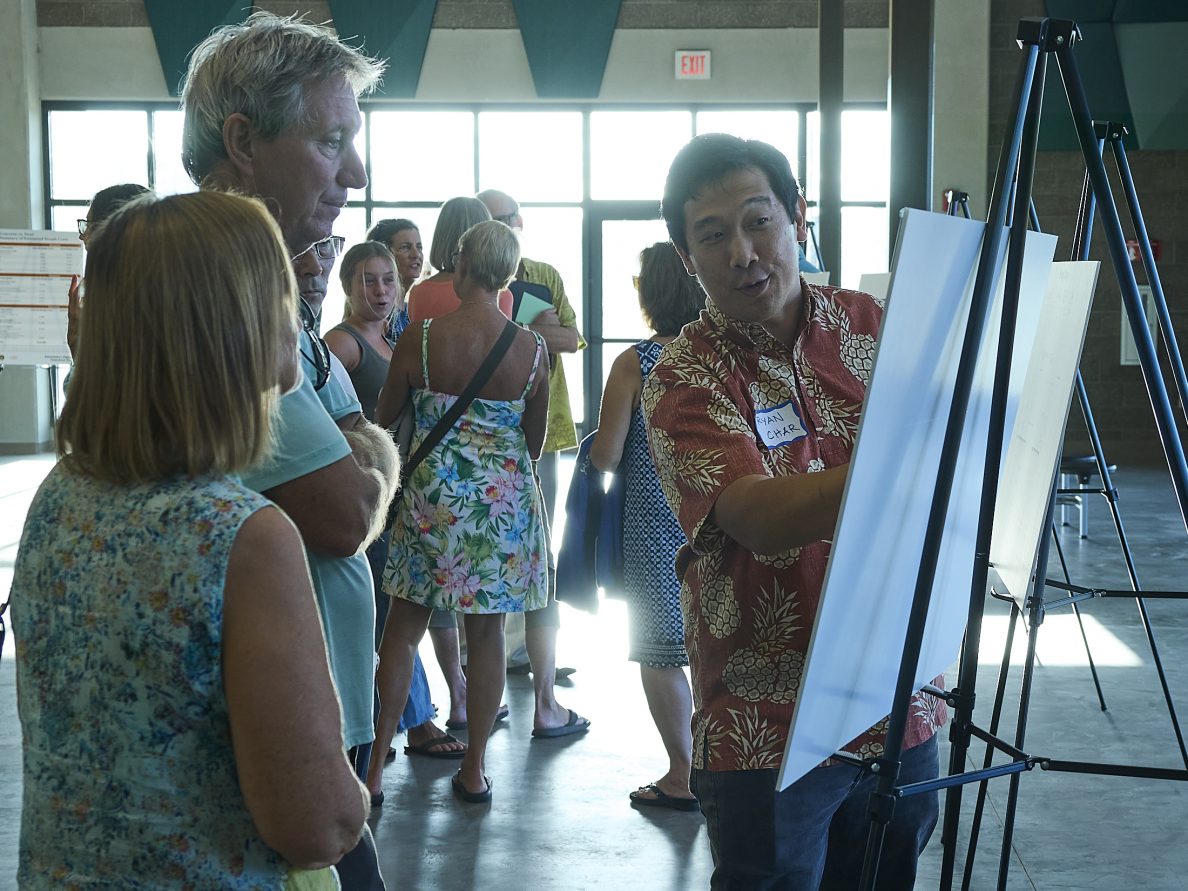An underpass construction would provide more accessibility for students, the Kihei Community Association said.
The long-awaited pedestrian overpass for Kulanihakoi High School may be completed by December 2025, with costs estimated to be between $16 million and $17.5 million.
The timeframe and cost projections were presented at a meeting Wednesday night by members of the Department of Education, Department of Transportation and the architectural firm Group 70.
Kulanihakoi, South Maui’s first public high school, enrolled around 140 freshman and sophomore students when it opened for the 2023-24 school year. The school then served over 750 additional students who temporarily relocated from Lahainaluna High School after the August wildfires.

Student transportation across the busy Piilani Highway to the school has been the subject of debate and frustration for years. In 2013, the Land Use Commission mandated that the school, which has cost more than $200 million, must have a pedestrian overpass or underpass across the four-way highway.
But the DOE failed to comply with the commission’s requirements when it constructed a $16 million roundabout with the hopes of opening the school in early 2023. When LUC and Maui Mayor Richard Bissen held firm on the need for an overpass or underpass, the school’s reopening was delayed until August and prospective students remained in portable classrooms at Lokelani Intermediate.
In March, the state entered into an agreement with Maui County, allowing Kulanihakoi High to operate under a temporary certificate of occupancy and enroll a limited number of students. As part of the agreement, all students – including those living across from the school on the opposite side of the highway – must be dropped off at campus.
Now, DOT and DOE have plans to build a 140-foot overpass across the highway, with ramps approximately 270 feet on either side. Parts of the overpass will be fully enclosed, while other parts will have a 42-inch guardrail, said Mark Tagawa, who represented G70 at the meeting. He added that G70 is considering using a precast concrete structure to reduce the costs and length of time constructing the overpass.
“The idea was always that concrete would be a better solution, just because of its longevity and ease of maintenance over steel,” Tagawa said.
DOE deputy superintendent Curt Otaguro said that, because G70 worked as the lead architect for Kulanihakoi’s campus, the DOE asked the firm to also oversee the design of the overpass.
DOT will take the lead in securing funding for the project, said deputy director for highways Robin Shishido. He added that the department will request appropriations from the state legislature but will also look into federal grants to cover the overpass. If the state opts to construct the bridge using concrete instead of steel, the cost of the project will drop from approximately $17.5 to $16 million.
Last spring, a $15 million proposal to fund the pedestrian overpass did not make it into the state’s final budget.

“We’re going to be heading into a new budget session again, so we’ll continue to work with our legislators and look at the funding,” Shishido said.
Because DOT will take responsibility for funding and overseeing the construction of the overpass, it will serve as a community good and will remain open for 24 hours a day, seven days a week, said G70 senior associate Cami Kloster.
“There’s agreement that the Department of Transportation is going to fund, own and operate the overpass, which really feels like a great decision for the community,” Kloster said.
In the meantime, the state will continue to require that students be driven to school. Despite its original intent to facilitate pedestrian traffic across the highway to the school, the roundabout’s crosswalk is closed off and may be removed after the overpass is constructed, Kloster added.
Otaguro said that the planning of the overpass is only at 30%, adding that DOT, DOE and G70 want to hear the community’s feedback on the project. He added that residents may be especially concerned about how the overpass looks, given that it acts as an informal gateway to Kihei.
Mike Moran, president of the Kihei Community Association, said he wanted the state to opt for an underpass, rather than an overpass. An underpass would be more accessible to students, he said, adding that he worries high school students will run across the highway instead of climbing the stairs to the overpass.
“Why build this if kids aren’t going to use it anyway?” he said.
But, given recent heavy rains in Maui, flooding in the underpass would be a concern, Otaguro said.
Kloster acknowledged that the project is one the community has anticipated for years.
“Many of you have lived through a lot of years of, ‘when is the school going to open and how are students going to get to school?’” Kloster said.
Civil Beat’s education reporting is supported by a grant from Chamberlin Family Philanthropy.
Civil Beat’s coverage of Maui County is supported in part by a grant from the Nuestro Futuro Foundation.
